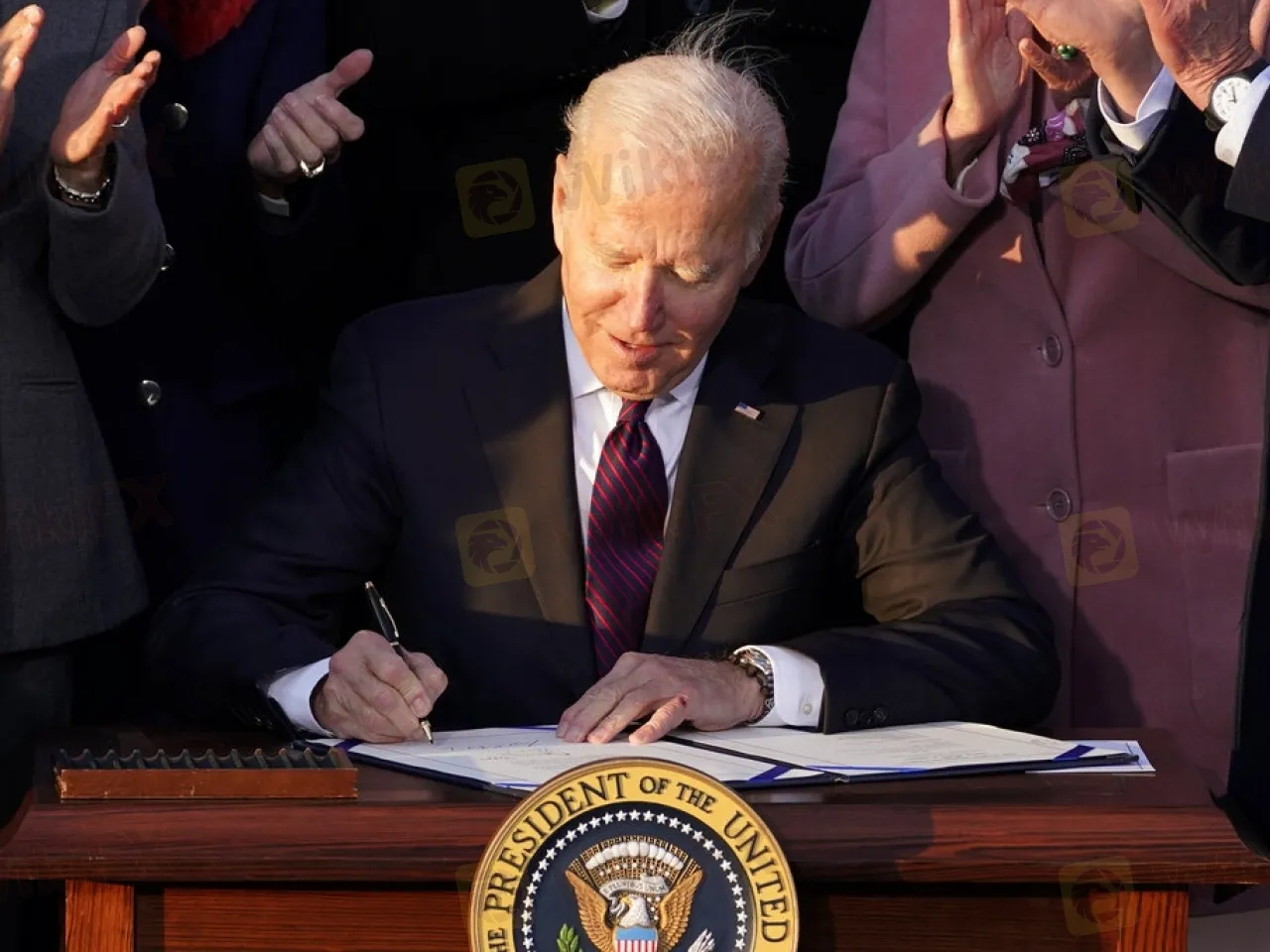简体中文
繁體中文
English
Pусский
日本語
ภาษาไทย
Tiếng Việt
Bahasa Indonesia
Español
हिन्दी
Filippiiniläinen
Français
Deutsch
Português
Türkçe
한국어
العربية
Biden signs $1 trillion bipartisan infrastructure bill into law
Abstract:President Joe Biden signed the more than $1 trillion bipartisan infrastructure plan into law Monday.

President Joe Biden signed the more than $1 trillion bipartisan infrastructure bill into law on Monday, checking off the first piece of his party's sprawling economic agenda.
The package will put $550 billion in new funds into transportation, broadband and utilities. Biden's signature follows years of failed efforts in Washington to overhaul physical infrastructure, improvements that advocates have said will boost the economy and create jobs.
The legislation will put $110 billion into roads, bridges and other major projects. It will invest $66 billion in freight and passenger rail, including potential upgrades to Amtrak. It will direct $39 billion into public transit systems.
The plan will put $65 billion into expanding broadband, a priority after the coronavirus pandemic left millions of Americans at home without effective internet access. It will also put $55 billion into improving water systems and replacing lead pipes.
Funding will go out over a five-year period. It could take months or years for many major projects to start.
Before signing the legislation, Biden said “we're finally getting this done” after years of failed attempts in Washington. He stressed the direct benefits Americans will feel from the law — part of a broader sales pitch he will carry out in the coming days and months ahead of the 2022 midterm elections.
“So my message to the American people is this: America is moving again, and your life is going to change for the better,” he said.
A refresh of physical infrastructure fulfills one portion of Biden's economic vision. On Monday, he made the case for Congress to pass what Democrats see as a complementary package: a $1.75 trillion investment in the social safety net and climate policy.
The House aims to pass its version of the bill this week. House Speaker Nancy Pelosi tried to tie the plans as closely together as possible to ensure the centrist and progressive flanks of her party backed both.
The president said he is “confident that the House can pass this bill, and then we're going to pass it in the Senate.”
“Together with the infrastructure bill, millions of lives will be changed for the better,” he said.
Many Democrats have said the bipartisan plan did not go far enough to address climate change or build an additional layer of support for households by addressing policies such as child care, education, household tax credits and heath care.
Biden celebrated the infrastructure plan's passage with lawmakers from both parties who helped to write and pass it. Nineteen Republicans voted for the measure when the Senate approved it in August, while 13 GOP representatives backed it when the House passed it earlier this month.
Several GOP lawmakers attended the bill signing. About 800 people, including members of Congress, mayors, governors and union officials, came to the event.
Some Republicans who backed the measure have faced criticism and even alleged death threats for their votes.
Biden has looked for a signature achievement to celebrate as sustained inflation and the lingering pandemic, among other issues, put a dent in his approval ratings. Democrats hope to promote the social safety net and infrastructure bills on the campaign trail next year as they try to defend their congressional majorities in the midterm elections.
Biden will head to New Hampshire and Michigan on Tuesday and Wednesday, respectively, to sell the infrastructure plan.
The president was not the only one who highlighted the plan's benefits after it became law. In statement Monday, the 10 Democratic and Republican senators who were its lead authors said in a joint statement that the law will “positively impact every American.”
For more Forex news, please download WikiFX- the Global Forex Regulatory Inquiry APP.
Disclaimer:
The views in this article only represent the author's personal views, and do not constitute investment advice on this platform. This platform does not guarantee the accuracy, completeness and timeliness of the information in the article, and will not be liable for any loss caused by the use of or reliance on the information in the article.
WikiFX Broker
Latest News
Exposing the Top 5 Scam Brokers of March 2025: A Closer Look by WikiFX
Gold Prices Climb Again – Have Investors Seized the Opportunity?
Webull Launches SMSF Investment Platform with Zero Fees
Australian Regulator Warns of Money Laundering and Fraud Risks in Crypto ATMs
The Withdrawal Trap: How Scam Brokers Lure Victims into Paying More
FCA to Investors: Think Twice Before Trusting These Brokers
Trump\s tariffs: How could they affect the UK and your money
Trump gambles it all on global tariffs he\s wanted for decades
TradingView Brings Live Market Charts to Telegram Users with New Mini App
HTFX Spreads Joy During Eid Charity Event in Jakarta
Currency Calculator








